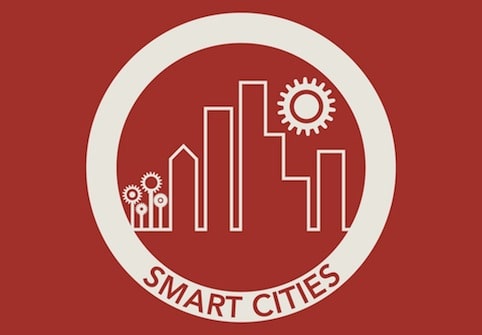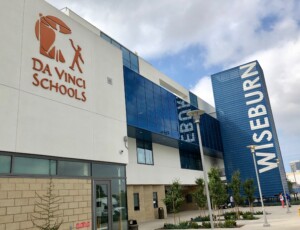Preparing Students for Careers & Developing a Workforce

“An economy’s ability to grow over time—its ability to innovate and raise both productivity and real incomes—is strongly tied to the quality of education provided to the vast majority of workers,” said Stanford economist Eric Hanushek. “Skills and intellectual capital are increasingly important in a modern economy, and schools play a central role in the development of valuable skills.”
Hanushek further asserts that it is not simply attainment levels that matter, saying, “[H]igher levels of cognitive skill appear to play a major role in explaining international differences in economic growth.” He calculates that “a highly skilled workforce can raise economic growth by about two-thirds of a percentage point every year.”
The problem that this post attempts to investigate is the skills gap between young adults leaving secondary and postsecondary education the 3 million unfilled skilled jobs. There are also millions of students that failed to earn a postsecondary degree but carry college debt. This summer I found a number of CTE schools that straddle high school and college–they prepare students for family wage employment while they earn college credits.
Starting in high school. Bob Sommers, Carpe Diem Learning Systems, has served as education commissioner in two states and, most recently, led the CareerTech system in Oklahoma. “Because of the positive impact I’ve seen high quality CareerTech have on high school students, I’m a big advocate for incorporating [career education] into high school settings. I think we separate the doing from the thinking way too long in our traditional settings.”
The CareerTech system straddles high school and college, offering high school juniors and seniors access to job-focused training resulting in industry credentials. Sommers points to three campuses with particularly strong business partnerships: Francis Tuttle Tech Center, in Oklahoma City, Tulsa Tech Center, and Tri-county Tech Center in Bartlesville (which has a very cool visual strategic plan). High School students can complete a one-year certificate option or a two-year diploma.
Career Path High (featured here) is located within the Davis Applied Technology College Campus north of Salt Lake City. The flexible blended 9-12 program prepares students for an upper division program that includes access to 30 job certificate programs. Students are expected to graduate with a diploma, a certificate and college credit–potential and AA degree.
Columbus State has productive relationships with area high schools including a dual enrollment program with Reynoldsburg High (featured here).
Business partnerships. On higher education, Sommers said, “They need to dramatically increase their associate degree development collaboration with business. There is balance with industry credentials but local modifications make all the difference.”
Localized mapping of emerging job and associated skill clusters is critical. “Higher Ed needs to fill gaps, not replace existing services,” said Sommers, “Some places have very sophisticated workforce systems outside of higher Ed, others do not.”
The Central Educational Center in Coweta County Georgia is a charter school that blends secondary and postsecondary education and job training. Working across boundaries of high school, college, and work can get tough but CEC developed a replication manual. The board is partially appointed by the chamber of commerce.
Next Gen CTE.Butler Tech is one of Ohio’s largest career-technical schools and has some great blended and personalized learning programs including the Arts Academy.
Tri-Rivers Career Center in Marion, Ohio is home to The Robotics & Advanced Manufacturing Technology Education Collaborative (RAMTEC) and has a campus wide focus on workplace skills called Bring Your A Game To Work.
Of the largest community college system in the country, Hechinger Reports said, “If higher education is moving slowly toward that future, the Maricopa Community College District… is racing at high speed.” Rolling course start dates, early warning systems, proactive advisors, and easy credit transfers are a few recent innovations.
State initiatives. Louisiana recently passed Workforce and Innovation for a Stronger Economy (WISE). The legislation adds $40M of funding to workforce-development program but requires a 20% corporate match. It replaces hundreds of eliminated programs that were not workforce related.
Last year Louisiana expanded access to part time online learning in high school. The Supplemental Course Academy includes many career and technical education (CTE) courses. (See recent paper on Making the Most of State Course Access Programs)
Smart Cities. Hanushek said, “The future of every city depends on skills.” That’s the premise of our new book, Smart Cities That Work for Everyone. Our two year investigation identified 7 keys to education and employment:
- Innovation Mindset: cultivating and rewarding effort, initiative, and collaboration in kids and adults citywide;
- Innovation Leadership: building political capital to create great learning options;
- Talent Development: developing great teachers, leaders, and edupreneurs;
- Collective Impact: partnerships and community engagement;
- Aligned Investments: public and private investment;
- New Tools & Schools: new tools and new learning models; and
- Advocacy: pro-growth, pro-achievement, pro-employability, and pro-innovation policies.
The regions that skill up fast by improving K-12 and creating early and ongoing access to career education will flourish. Schools and colleges can’t do this alone, it requires civic leadership, business partnerships, and continued public, private and philanthropic investment. Learning is the best investment a family, a community, or a state can make.
For more, see:







0 Comments
Leave a Comment
Your email address will not be published. All fields are required.